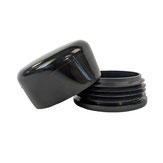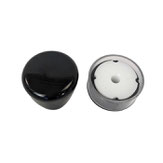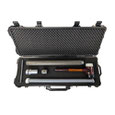Minirhizotron Acrylic Tubes - Various Length, Diameter and Refinements
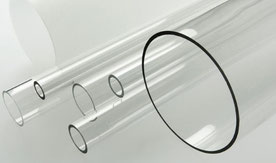
Minirhizotron Observation Tubes. Acrylic tubes are available in a range of diameters (suitable for VSI and BARTZ MR camera systems and Minirhizotron scanners) and lengths, other materials are available on request. See below for details of dimensions and material properties. In addition, we can cut and refine root observation tubes to standard lengths. Optional refinements can include glued-in bottom plugs, removable top lids, pre-drilled zero positioning holes, and/or foil for light exclusion on the future above ground part of the minirhizotron tube. When ordering a Minirhizotron camera, please let us know the minirhizotron tube dimensions you want to use (inside & outside diameter!) to set the camera focus (can be changed later if required).
Minirhizotron Root Imaging Tubes - Specifications
7-CM Tubes (VSI Standard)
Outer diameter: 70 mm
Inner diameter: 64 mm
Wall thickness: 3 mm
Length: 33 cm to 200 cm
6-CM / ~"2 INCH" Tubes (Bartz Standard)
Outer diameter: 60 mm
Inner diameter: 54 mm
Wall thickness: 3 mm
Length: 33 to 205 cm
MR Imaging tube prices are based on costs for 100 or 200 cm-tubes (i.e. manufacturer standard length) and costs for cutting / refining. Other metric tube dimensions upon request and according to availability. Note: The manual and automatic MR imaging systems of Vienna Scientific are factory adapted to a specified MR tube dimension.
Please inquire an offer, stating the number of tubes, their dimensions, and the type of refining required. Standard tubes length, end caps and the drill jig are available for 70 mm OD MR tubes in the minirhizotron online store. Please contact Bartz Technology Corporation for details on acrylic MR tubes available in the US, and for any non-metric tube dimension (INCH). However, the metric 7- or 6-cm MR tubes fit other commercial, inch-based MR imaging systems generally well.
Refining of Minirhizotron Observation Tubes
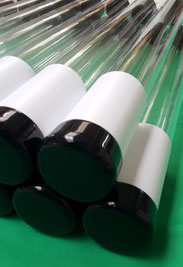
It is recommended that your Minirhizotron observation tubes are sealed at both ends to prevent the ingress of water, dust and daylight. We can supply (removable) end caps or manufacture all types of permanent seals (bottom only). Please note that the automatic VSI Minirhizotron camera systems for horizontally installed tubes require bottom caps with insets to position the camera (see below). When installed in non-temperate ecosystems, additional insulation of the protruding MR observation tube section is recommended to minimise ground temperature variations around the tubes. In any case, light should be prevented from entering protruding parts by applying an opaque film / foil to the protruding sections. Machine-readable tags affixed to the top of each pipe can be used by the VSI AC-19 MR camera units for automatic tube detection and location programming (in semi-automatic systems). Tubes used with VSI Minirhizoron cameras should hold a small hole close to the top to define the zero-position of the manual (MS-190) or automatic (AC-21) minirhizotron cameras; we can drill this hole or deliver a drill jig (also available in the web store) for self-installation. Standard tube lengths are 50, 60, 70, 100 and 200 cm, custom lengths are available on request. Note: the AC-21 requires 50 or 100 cm-long MR tubes. Please see below for examples of refined Minirhizotron observation tubes.
MR Tube End Caps
Bottom and top caps for 70 mm OD, 64 mm ID Minirhizotron tubes. Other cap dimension (for 6 cm tubes etc) can be provided. Sets include one bottom cap and one top cap. Variants for VSI MS-190 (manual) and AC-21 (automatic) Minirhizotron camera systems exist: AC-21 bottom caps have a POM inset (white in images) to guide the positioning system during rotation. Bottom caps must be glued into MR tube ends (i.e. the side without camera positioning hole!) to become waterproof. Buy MR tube caps for 70 mm tubes online and/or get a quote for other dimensions.
PMMA ("Acrylic") - Minirhizotron Root Observation Tubes

Poly(methyl methacrylate) (PMMA), also known as acrylic or plexiglass, and by the trade names Crylux, Plexiglas, Acrylite, Lucite, and Perspex, among others, is a transparent thermoplastic often used as a lightweight and shatter-resistant alternative to glass. Its environmental stability (UV and weathering) is superior to most other plastics, making PMMA the material of choice for outdoor applications such as minirhizotron tubes (and ex situ rhizobox root observation systems). A review of the influence of minirhizotron tube materials on root production and turnover showed that data from acrylic MR tubes were more consistent with standing root biomass than those from butyrate MR-T. With both plastics, chemical reactions on the surfaces and the release of low molecular weight chemicals are possible, but probably more common with butyrate (see Withington et al. 2003, New Phytol.).
| Properties | Acrylic / PMMA Tube Material | OPEN |
*as provided by manufacturer. |
||
| References | Minirhizotron Tube Material and Refining | OPEN |
|
||





